In this side-scrolling platform puzzle game set on a far away space station, use the weird gravity-flipping powers of your suit to avoid obstacles and make it to the exit door!
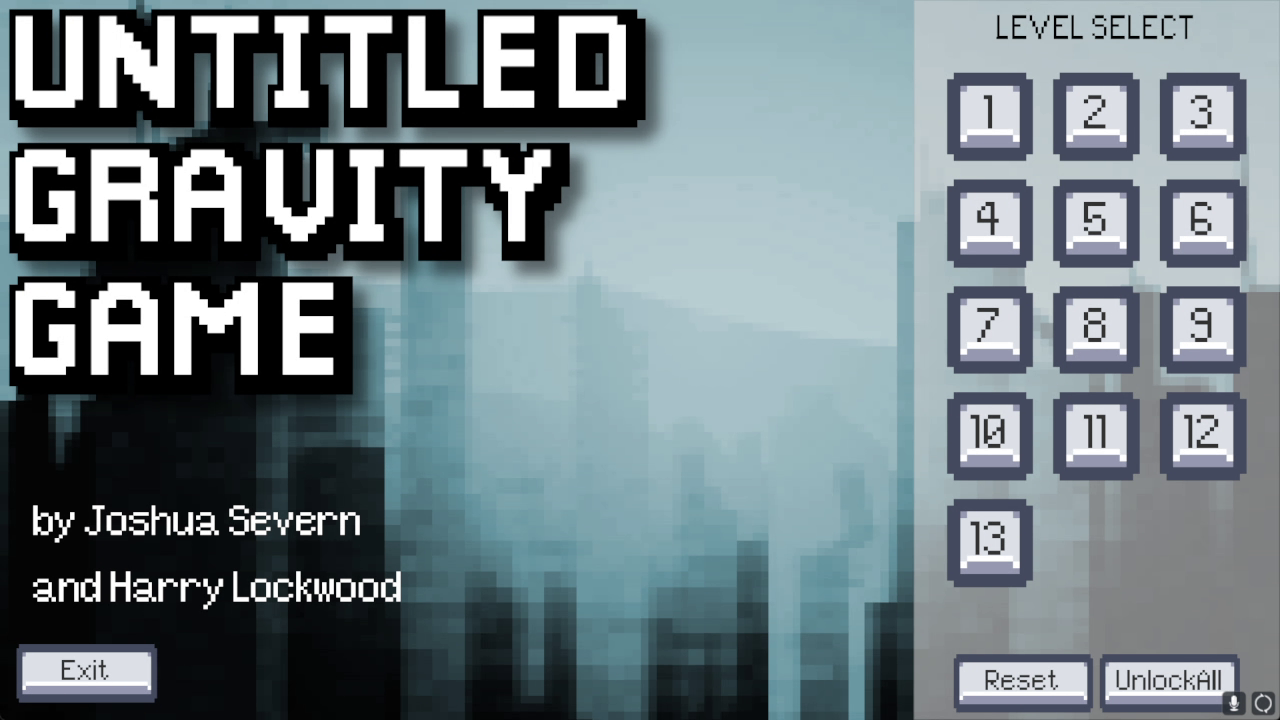
What Is This?
For a university Game Development course, we were set on two projects about making games in just under 6 weeks. We were expected to self-learn how to work in Unity to create our games, and we spent time making a game design document planning our game.
The game is a 2D puzzle-platformer game about flipping gravity instead of jumping. Your character must run and flip through dangerous obstacles to make it to the exit door of each level. Simple, right?

The emphasis of this game is to introduce a core dynamic and teach it to players. No one but the people working on the game will know what to do when they first start it!
A lot of research and prior “case studies” from various other game tutorials were used to help formulate the best way to teach game mechanics.
Why Intuitive Tutorials Are Important
To understand why intuitive tutorials are so important for a game’s success, let’s talk about a few things.
Teaching Core Dynamics
First of all, tutorials or introductory sections in your game are important to teach the player about core dynamics.
What are the objectives of your game? What objects are there? How do the objects interact with each other? What actions can you take to influence those objects?
Formally, dynamics are made up of the different actions a player can take in your game. This could be rolling a die, drawing a card, pressing left and right to move your character, and so forth. The set of available actions is meaningful to the player, but combined they form the core game dynamics.
Our game’s core dynamics are a mix between “Spatial Reasoning” and “Race To The Finish”, two popular core dynamics. The 1st dynamic comes from figuring out how where and when to flip gravity, to ensure your character goes where you want it to go. You’ll need to pay attention to obstacles above and below you, as you can only perform a gravity flip while grounded.
The 2nd dynamic is integral to platformers in the sense that there is a “start” position and a “finish” position. The time to get there is not a factor, but ensuring your character’s survival when traveling between the two points brings it under this archetype.
Bad Tutorials
Secondly, let’s talk about bad tutorials.
A tutorial that involves many long steps to teach the player, or too much text narration can become frustrating even if it teaches the player everything.
A good tutorial should be short and to the point, and get out of the player’s way as soon as possible. It’s important to get a good balance so that you achieve both goals.
Also, the type of teaching can depend on how complex your game is, or what genre your game is. A longer, more in-depth tutorial is useful for many strategy games, such as games in the Civilization series.
A platformer game rarely needs more than a few introductory levels for a good tutorial. Many laws of platformers come from our real-life expectations of physics: characters obey the laws of physics and get hurt from pointy things. The character moves left when we press the left arrow and moves right when we press the right arrow!
Implementing an Intuitive Game Tutorial
Check out the first screen of the game:
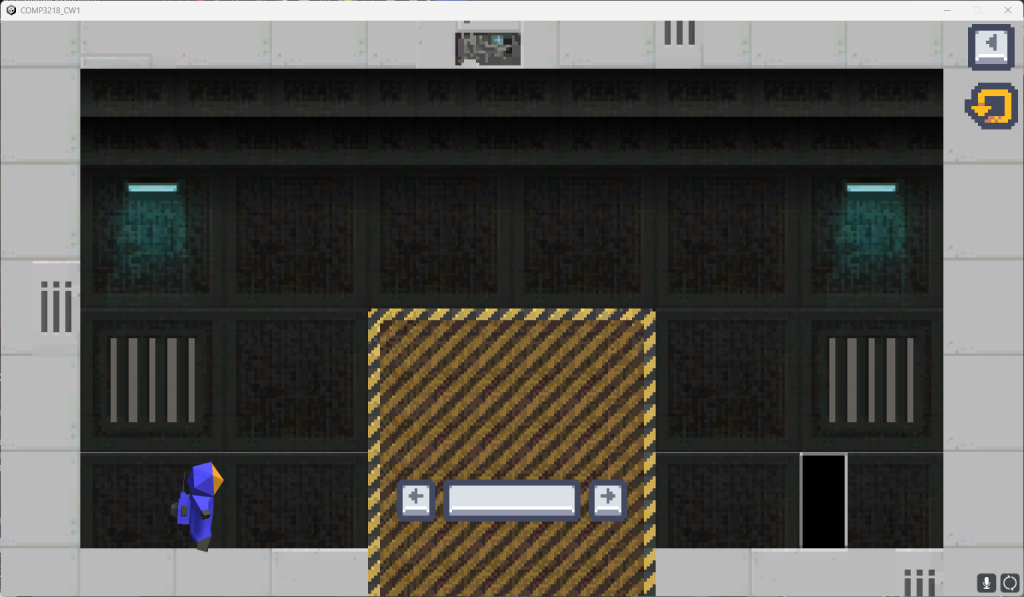
This first level is very simple. On a single screen, you can see your character, the exit door, and a big wall in the way.
Buttons on the screen correspond to the same keys on your keyboard, showing you that these are used to play the game.
Left and right arrows are obvious to anyone who has played platformers like Super Mario Bros, or any other game in that genre. The space bar would inherently mean jump, but a jump might not get you over that wall.
Here is the catch, the space bar flips gravity instead of jumping. This allows you to walk on the ceiling above the wall to get past. Now, the player has to just press the space bar again to flip back around, to land by the exit door.
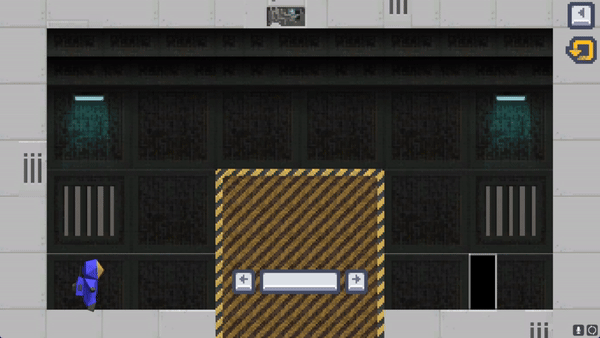
This might seem boring and easy for some, but remember: this is the very first level of the game. You HAVE to introduce the core ideas of your game early on to avoid confusion with players, of all skill levels!
Game Mechanics
Other mechanics in the game are designed to complement our main vison for a puzzle-platformer.
Hazards
The character dies in a single hit from any source of damage, such as spikes and buzzsaws. Hazards are marked with pointy red things, so players know what is not safe. The choice for “pointy red spike equals death” comes from color theory and our brains recognize aggressive colors.
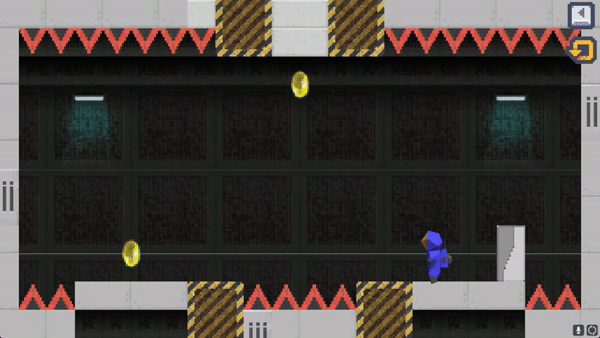
Screen Scrolling
Levels are also not limited to just one screen! Some levels scroll vertically and horizontally to give you a much bigger level space!
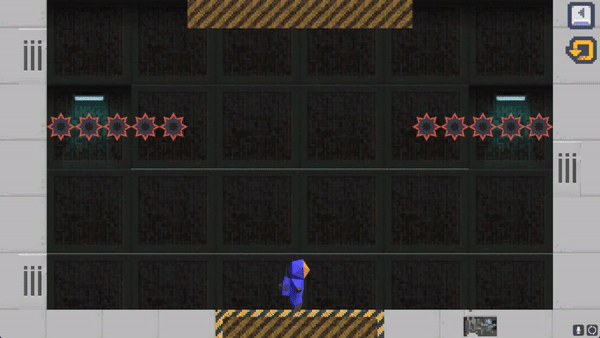
Unfortunately, we didn’t make many of these levels due to the limited number of levels in general. It was still a good feature, to allow all kinds of level shapes to be created in our engine. Besides, due to the one-hit-kill nature of the game, longer levels tended to be less fun than shorter levels with a clever solution.
Supporting Mechanics
One of my favourite levels comes from one mechanic: the Flip Fields.
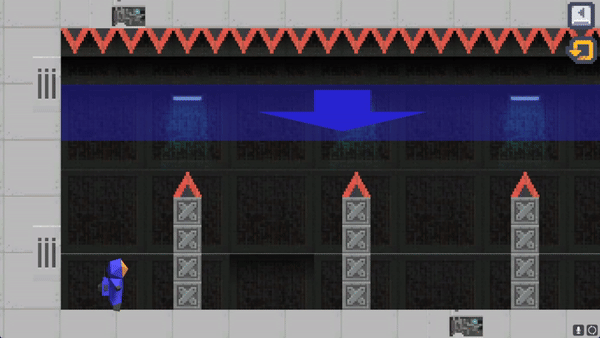
While less of a puzzle element, this helped create some interesting platforming challenges to “jump” over spike obstacles.
Some levels also feature moving platforms, where players must time their flips and ride platforms to the end.
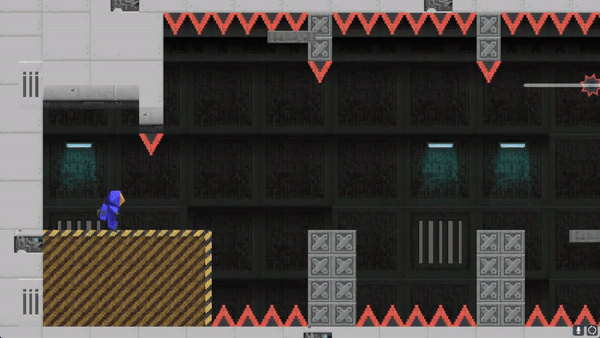
One catch with the physics is that the moving platforms don’t actually carry the player’s momentum. This was a bug I tried to fix for a week and couldn’t find anything that worked with the physics system I created. If anyone knows a (preferably quick and elegant) solution to this, please let me know in a comment or an email!
Level Design Quirks
Many levels in the game are designed according to level design principles I swear by. And many of these come from an unexpected source, Super Mario Maker!
Nintendo’s level design, especially in platformer games like the Super Mario Bros series, follow a simple structure. They introduce a concept to the player and let them figure out how it works. Afterwards, they expand on that mechanic through a series of challenges or “sections” of the level. Next, there is a twist or increase in challenge, using the core mechanic and supporting mechanics.
It’s also a good idea to lower the general difficulty. If they seem easy to you, the developer, that may be a case of muscle memory rather than the levels themselves being too easy. When playtesting a level over and over again you end up falling into muscle memory traps, and may accidentally decide to increase the difficulty, which is a mistake.
It was also a deliberate design choice to make everything in the game be placed on a square grid. Since we wanted to focus on platforming challenges and puzzles, clarity for each object and surface is very important to help the player know where they are going to land.
Conclusion
In conclusion, for a game made in just under 4 weeks, it was very well done. Although there could have been more careful planning for the physics system to prevent some bugs, the platforming controls are very smooth.
If you’d like to check out the project files, it’s available for free on my itch page: https://xpload334.itch.io/untitled-gravity-game